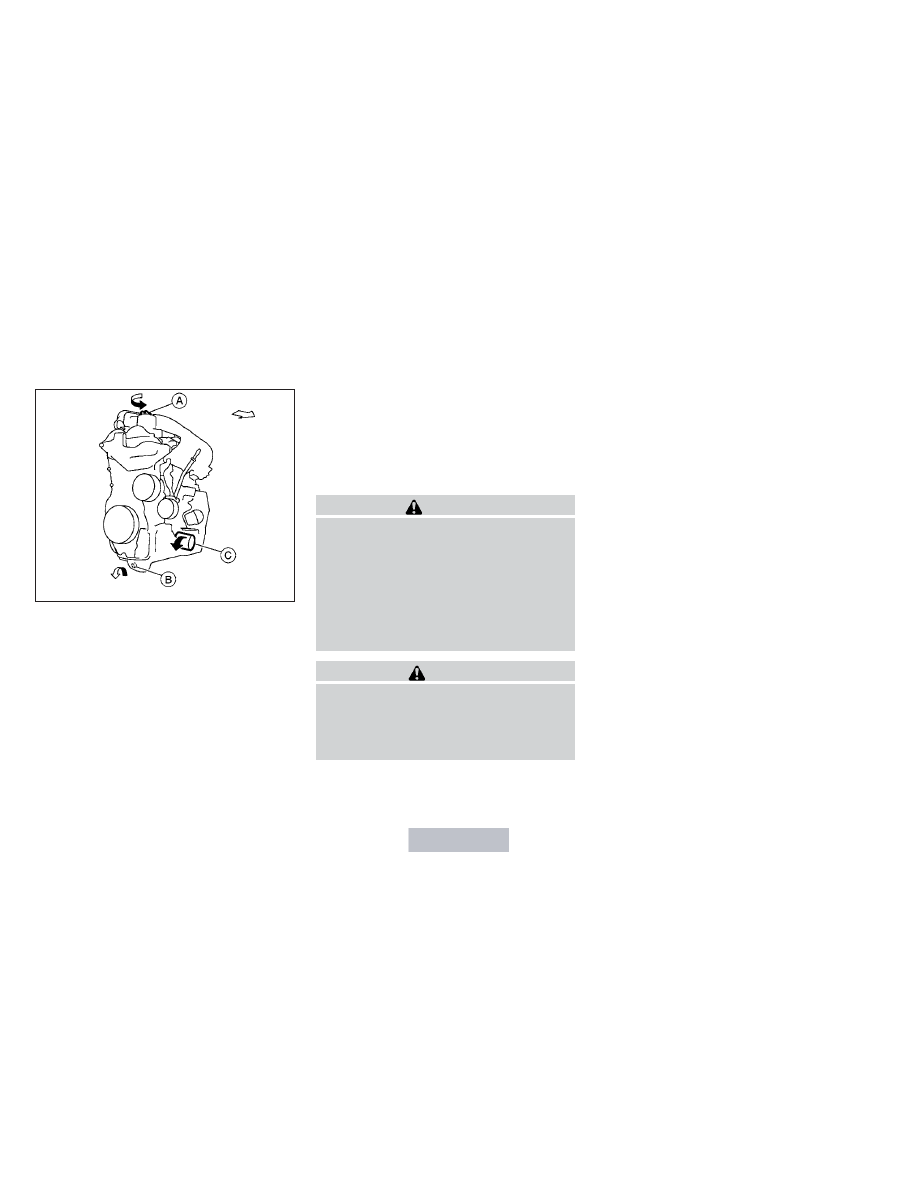Nissan Versa Hatchback (2012 year). Manual - part 17

CHANGING ENGINE OIL
1. Park the vehicle on a level surface and apply
the parking brake.
2. Start the engine and let it idle until it reaches
operating temperature, then turn it off.
3. Remove the oil filler cap
䊊
A
by turning it
counterclockwise.
4. Place a large drain pan under the drain plug
䊊
B
.
5. Remove the drain plug
䊊
B
with a wrench by
turning it counterclockwise and completely
drain the oil.
If the oil filter is to be changed, remove and
replace it at this time. See “Changing engine
oil filter” later in this section.
WARNING
● Prolonged and repeated contact with
used engine oil may cause skin cancer.
● Try to avoid direct skin contact with
used oil. If skin contact is made, wash
thoroughly with soap or hand cleaner
as soon as possible.
● Keep used engine oil out of reach of
children.
CAUTION
● Be careful not to burn yourself. The en-
gine oil may be hot.
● Waste oil must be disposed of properly.
● Check your local regulations.
6. Clean and reinstall the drain plug and a new
washer. Securely tighten the drain plug with
a wrench. Do not use excessive force.
Drain plug tightening torque:
22 - 29 ft-lb (29 - 39 N·m )
7. Refill engine with recommended oil through
the oil filler opening, then install the oil filler
cap securely.
See
“Capacities
and
recommended
fuel/lubricants” in the “Technical and con-
sumer information” section of this manual for
drain and refill capacity.
The drain and refill capacity depends on the
oil temperature and drain time. Use these
specifications for reference only. Always use
the dipstick to determine when the proper
amount of oil is in the engine.
8. Start the engine. Check for leakage around
the drain plug and oil filter. Correct as re-
quired.
9. Turn the engine off and wait more than 10
minutes. Check the oil level with the dipstick.
Add engine oil if necessary.
䊊
A
Oil filler cap
䊊
B
Oil drain plug
䊊
C
Oil filter
WDI0691
8-10
Maintenance and do-it-yourself